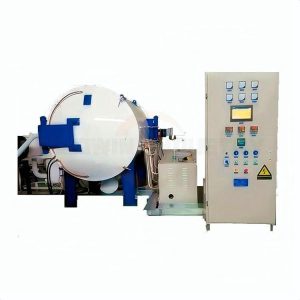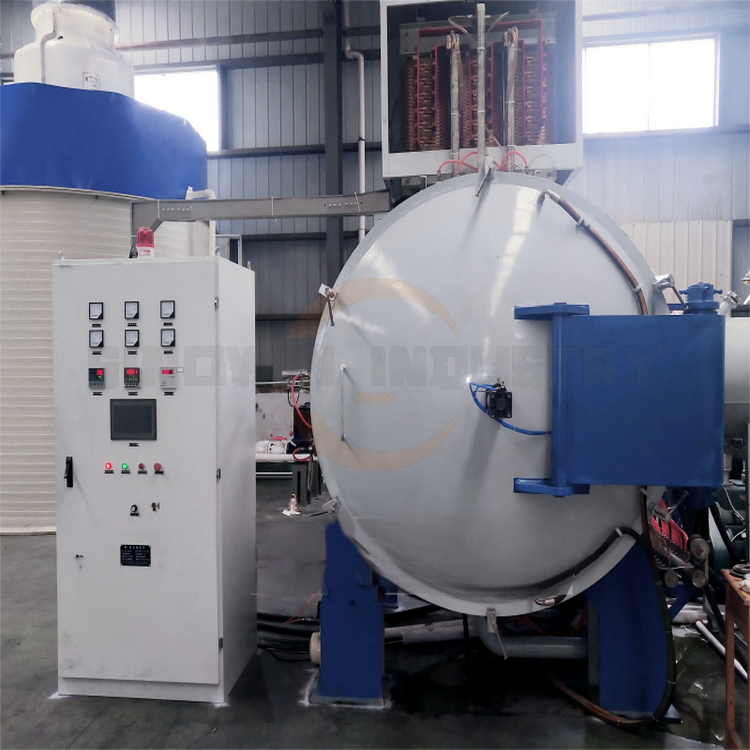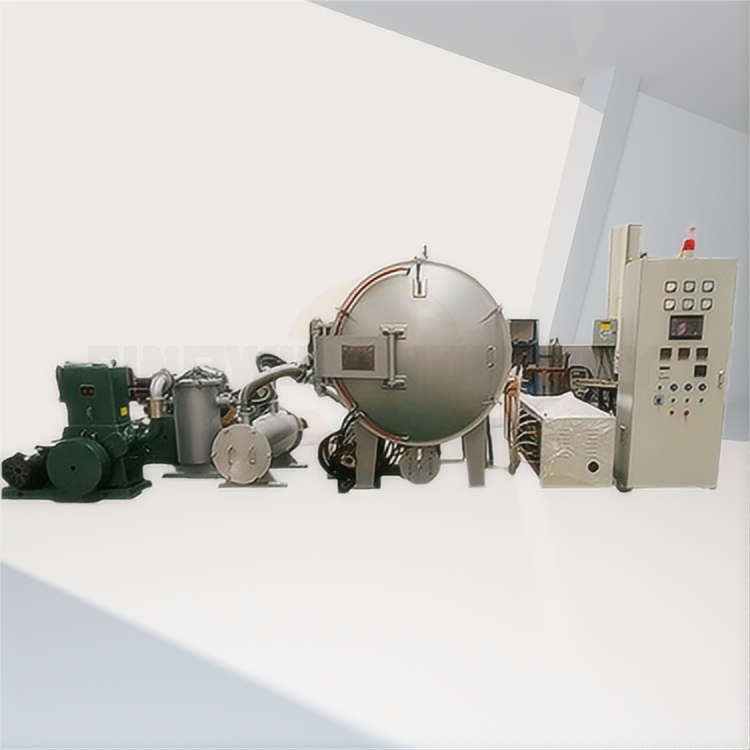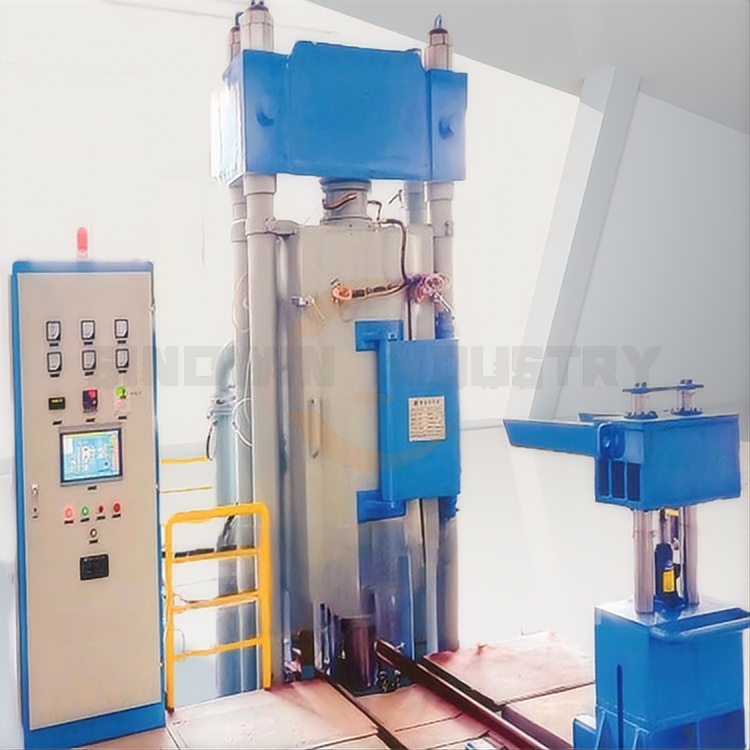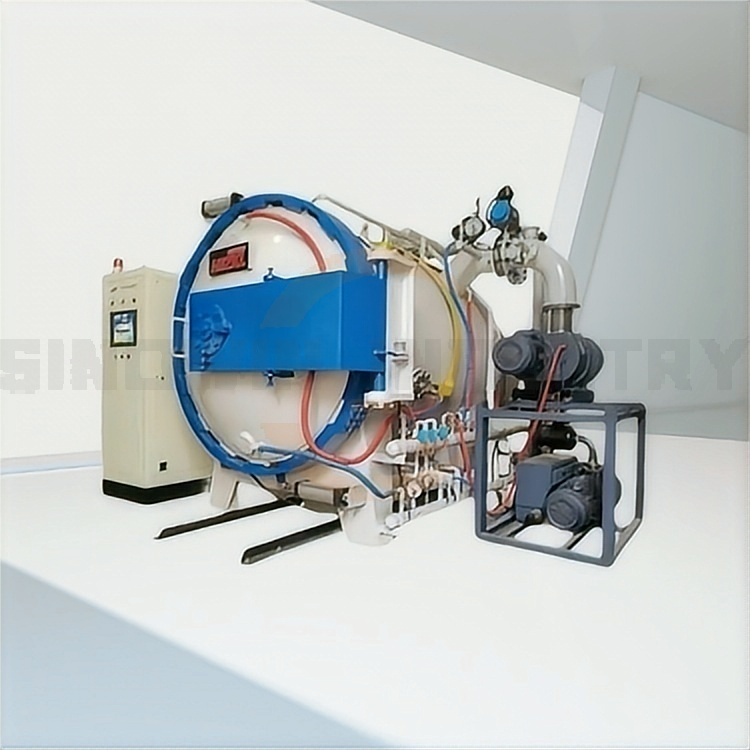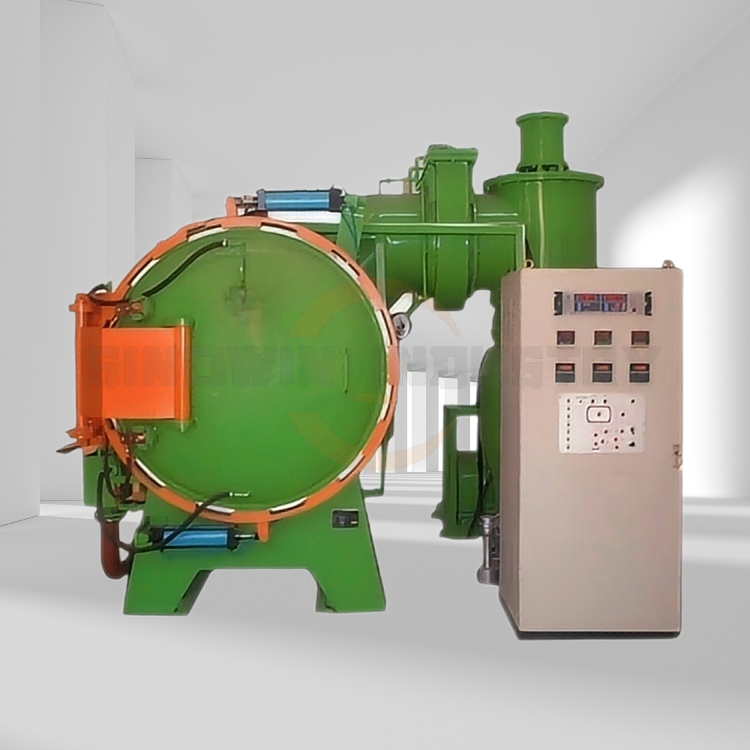Product Description:
The Resistance Alumina Ceramic Sintering Furnace, used for the high-temperature sintering of alumina ceramics. This furnace showcases exceptional features for both industry professionals and research institutions.
Key Features:
- High-Temperature Capability: The furnace utilizes a tungsten heating element, reaching temperatures of up to 1800°C. It maintains stable operation at high temperatures for extended periods, ensuring optimal sintering conditions for alumina ceramics.
- Versatile Loading Options: The furnace design accommodates various configurations, including top-loading, bottom-loading, and options for vacuum or atmosphere protection, catering to a wide range of operational needs.
- Superior Sealing Structure: With excellent sealing properties, the furnace features a fully sealed structure and a high-vacuum replacement system, ensuring the purity of gases within the furnace chamber is maintained during the sintering process.
- Rapid Heating Rates: Achieve high heating rates of up to 600°C/h (with faster rates achievable at lower temperatures), significantly reducing processing times.
- Short Production Cycles: The furnace enhances production efficiency with a quick cycle time ranging from 24 to 36 hours from loading to unloading (longer for larger furnaces), facilitating timely output without compromising quality.
- Precision Temperature Control: Utilizing advanced high-temperature precision measurement technology, the PID segmented program controls the heating curve, ensuring accurate temperature management with minimal deviation.
- High Safety Standards: Designed with safety in mind, the furnace is constructed with a double-layer stainless steel shell, featuring a water-cooling interlayer that keeps the outer shell temperature below 50°C. It is equipped with pressure, water, and high-temperature alarms, along with an overpressure relief system.
- User-Friendly Control System: Controlled via a human-machine interface touch screen, the furnace simplifies operation and temperature logging, making it user-friendly and pragmatic for all users.
- Customizable Filtration System: To meet specific process requirements, the furnace can be outfitted with a multi-stage filtration system that effectively protects the vacuum unit.
- Modular Structure: The innovative modular design allows one machine to support multiple furnace types, enhancing versatility in operations.
The Resistance Alumina Ceramic Sintering Furnace is your ultimate solution for high-performance sintering applications, ensuring precision, efficiency, and safety in the production of alumina ceramics. Whether you’re in manufacturing or research, this sinowin industry’s furnace is the ideal investment for advanced ceramic processing.
Technical Parameter:
| Work Size DXH(mm) | Ф300X
600 |
Ф400X
800 |
Ф500X
1000 |
Ф600X
1200 |
Ф200X
400 |
Ф150X300 |
| Work Temperature(℃) | 1800 | 1800 | 1800 | 1800 | 1800 | 1800 |
| Temperature uniformity(℃) | ±5 | ±5 | ±5 | ±5 | ±5 | ±5 |
| Voltage (V) | 3phase,380 | |||||
| Power(KW) | 40 | 100 | 160 | 200 | 30 | 20 |
| Atmosphere | High Vacuum | |||||
| Vacuum Degree (Pa) | 6.6X10-3 | |||||
Whether you are in research, analysis, or manufacturing, the Resistance Alumina Ceramic Sintering Furnace supplied from SINOWIN INDUSTRY is one guaranteed option for your heating treatment industry.
Donot hesitate to Contact us at once for quotation of Sinowin Industry’s industrial&lab furnaces , and we are not only a supplier but a reliable partner to assist you the safe solutions of the heat treatment .
Product Q&As for Electric Resistance Alumina Ceramic Sintering Furnace
Q1: What are the benefits of using an electric resistance alumina ceramic sintering furnace?
A1: The electric resistance alumina ceramic sintering furnace offers several advantages, including excellent temperature uniformity, high efficiency, and precise control over sintering parameters. Its full-sealed structure ensures high gas purity within the furnace, making it ideal for specialized ceramic applications. Additionally, the rapid heating rate of up to 600°C per hour significantly reduces production cycles, allowing for faster turnaround times without compromising quality.
Q2: How is the electric resistance furnace used for alumina ceramics?
A2: The electric resistance furnace is specifically designed to sinter alumina ceramics by maintaining optimal temperature and atmospheric conditions. Alumina powder is packed and placed inside the furnace, where it is gradually heated to the required sintering temperature. The electric resistance elements provide consistent heating, facilitating the transformation of the powder into a dense, strong ceramic structure.
Q3: What temperature is required for sintering alumina ceramics in the furnace?
A3: To sinter alumina ceramics effectively, temperatures typically range between 1400°C to 1650°C. The exact temperature depends on the specific alumina formulation and desired properties of the final product. The furnace’s ability to reach high temperatures efficiently plays a crucial role in achieving optimal material characteristics.
Q4: Can the electric resistance furnace be used for other materials?
A4: Yes, the electric resistance furnace is versatile and can be utilized for sintering various materials beyond alumina ceramics, such as zirconia and other ceramic composites. However, it is essential to ensure that the material’s sintering temperatures and requirements align with the furnace’s capabilities for optimal results.
Q5: Which industries typically use alumina ceramic sintering furnaces?
A5: Alumina ceramic sintering furnaces are commonly utilized in industries such as electronics, aerospace, automotive, and medical devices. They are essential for manufacturing components like insulators, cutting tools, and advanced ceramics due to the superior properties of sintered alumina, including high hardness and thermal stability.
Q6: How do you maintain an electric resistance alumina ceramic sintering furnace?
A6: To maintain the electric resistance alumina ceramic sintering furnace, regular checks of the heating elements, insulation, and vacuum systems are necessary. It’s important to clean the interior and exterior of the furnace to prevent contamination. Additionally, periodic calibration of temperature controllers and other operational parameters ensures consistent performance and longevity of the equipment.
Q7: What is the difference between gas and electric ceramic sintering furnaces?
A7: The primary difference lies in their heating methods; electric furnaces use resistance heating elements for precise temperature control, while gas furnaces rely on combustion. Electric furnaces typically offer superior temperature uniformity and faster heating rates, making them ideal for high-performance materials. On the other hand, gas furnaces may be preferred for large-scale production due to potentially lower operating costs. The choice between the two depends on specific application needs and production requirements.
Please feel free to consult for any additional questions or specifics related to your requirements for the resistance alumina ceramic sintering furnace!
Technical Parameter of the 1800 degree Resistance Alumina Ceramic Sintering Furnace
| Work Size DXH(mm) | Ф300X
600 |
Ф400X
800 |
Ф500X
1000 |
Ф600X
1200 |
Ф200X
400 |
Ф150X300 |
| Work Temperature(℃) | 1800 | 1800 | 1800 | 1800 | 1800 | 1800 |
| Temperature uniformity(℃) | ±5 | ±5 | ±5 | ±5 | ±5 | ±5 |
| Voltage (V) | 3phase,380 | |||||
| Power(KW) | 40 | 100 | 160 | 200 | 30 | 20 |
| Atmosphere | High Vacuum | |||||
| Vacuum Degree (Pa) | 6.6X10-3 | |||||

